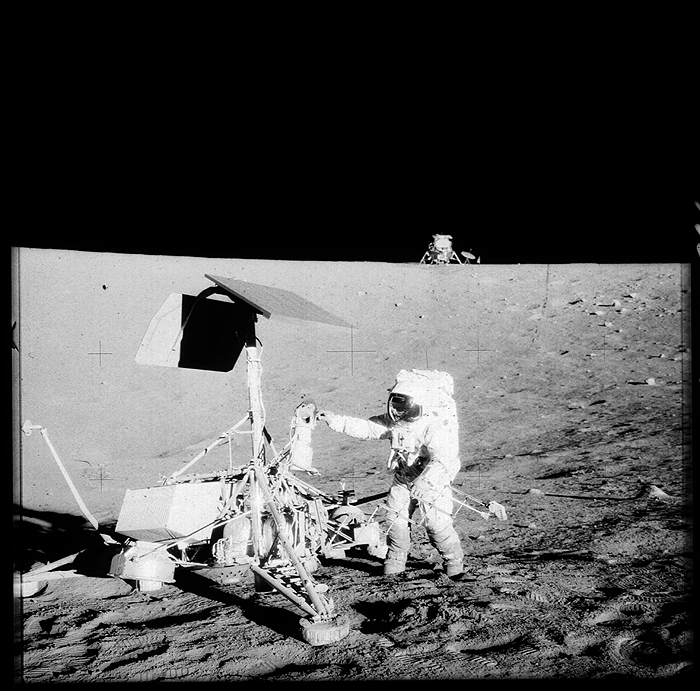
Caption: Pete Conrad (1930--1999) of Apollo 12 (Apollo 12 Nov20) on the Moon finds Surveyor 3 (landing date 1967 Apr17).
Notice the regolith dust. This powdery dust has been created by blasting by micrometeoroids and other space weathering processes. The dust (NOT the regolith in toto) is perhaps a few centimeters thick (Se-445). The dust is quite glassy and slippery (Ze2002-177).
The Apollo astronauts always landed in the daytime of the lunar day, but the sky looks black because there is almost NO atmosphere to scatter sunlight around.
-
Airless worlds
are astro-bodies
NO or almost NO atmosphere.
A very thin atmosphere
where atoms and
molecules are
gravitationally bound
to a astro-body,
but have too
low a density to collide with
each other significantly is called
an exosphere.
There is, in fact,
a lunar exosphere: i.e.,
Moon's atmosphere.
Recall the lunar day is as long as the lunar month = 29.530588861 days (mean value, J2000) and so lunar daytime is about 14.7 days.
Because of the Moon's small size the horizon seems very near. Perhaps this is NOT obvious in images, but the Apollo astronauts were quite struck by it (PF-103).
To explicate the distance to the horizon, consider the horizon distance formula: